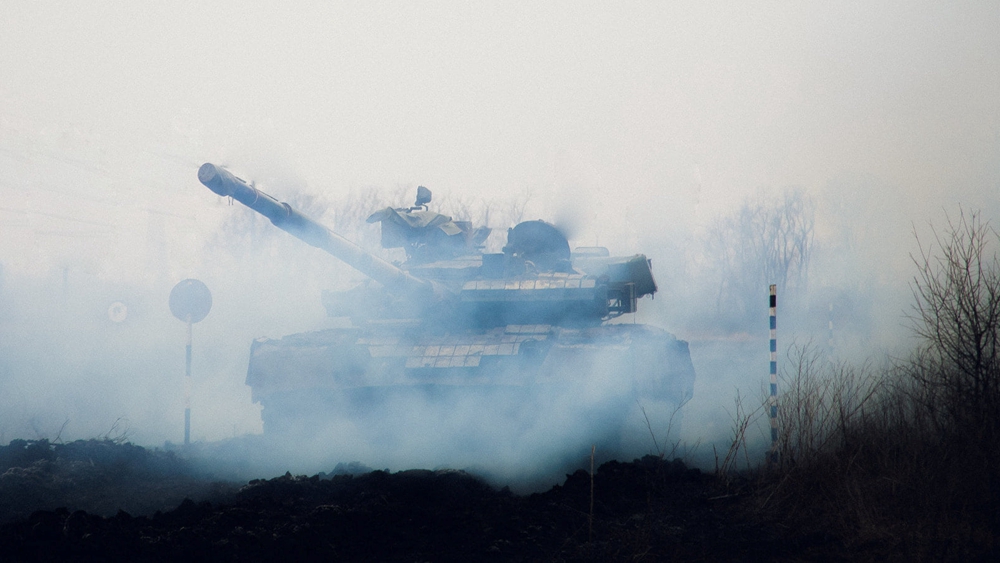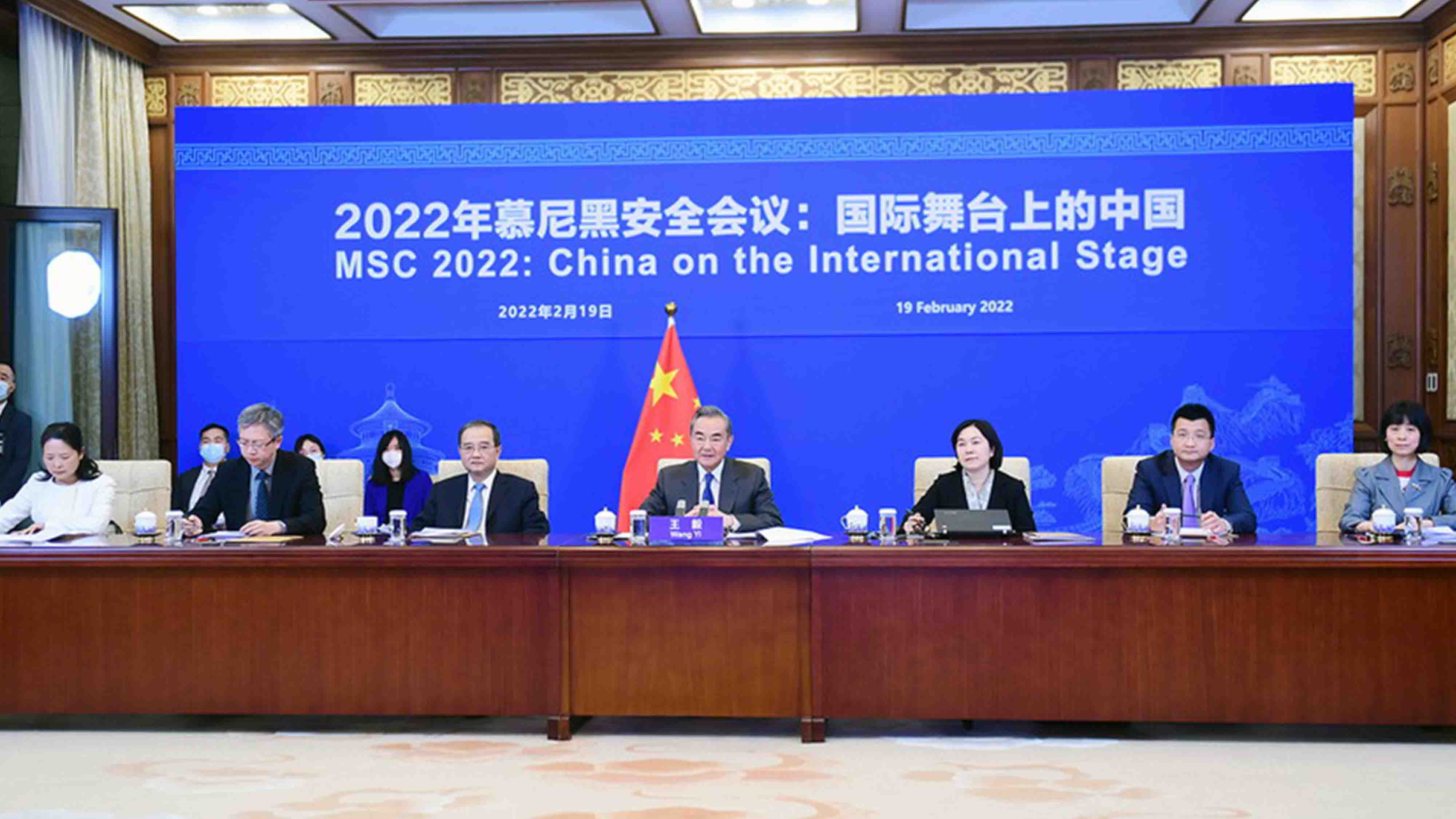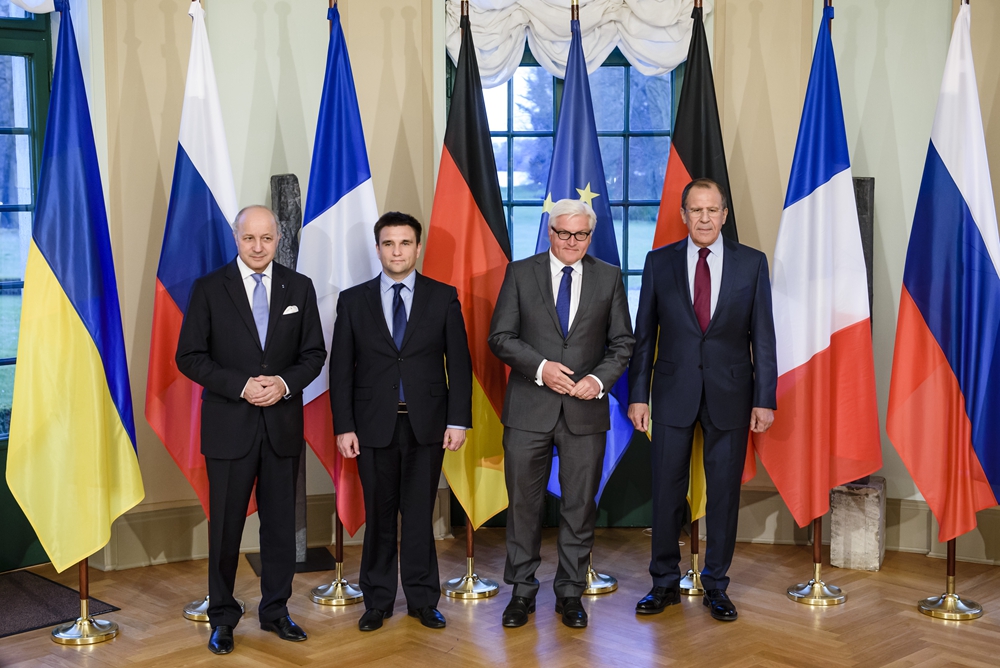
A tank of the Ukrainian Naval Infantry Corps (Marine Corps) is seen during drills at a training ground in an unknown location in Ukraine, February 18, 2022. /Reuters
A tank of the Ukrainian Naval Infantry Corps (Marine Corps) is seen during drills at a training ground in an unknown location in Ukraine, February 18, 2022. /Reuters
The "Minsk II" agreement has become a buzzword in media coverage of the Ukraine tensions. The deal's name has been repeated over and over again by world leaders and diplomats as they seek to ease the tensions and find a solution to the standoff.
Chinese State Councilor and Foreign Minister Wang Yi on Saturday said it is time to return to the original point of the Minsk II agreement as soon as possible, calling it the "only way out" for solving the Ukraine issue.
Wang, commenting on the situation in Ukraine via video link at the 58th Munich Security Conference, called on relevant parties to sit together with a full discussion and work out a roadmap and timetable for the implementation of the agreement.
What is the Minsk II agreement? Was a "Minsk I" deal reached before it?
00:54

Minsk is the capital of Belarus, a country bordering both Ukraine and Russia. In September 2014, the Ukrainian government and the rebels in eastern Ukraine agreed a 12-point ceasefire deal in Minsk, which was the first Minsk agreement.
Its provisions included prisoner exchanges, deliveries of humanitarian aid and the withdrawal of heavy weapons, five months into a conflict that by that point had killed more than 2,600 people – a toll that has risen to more than 14,000 now, according to the Ukrainian government. The agreement quickly broke down.
In February 2015, representatives of Russia, Ukraine, the Organization for Security and Cooperation in Europe (OSCE) and the leaders of two pro-Russian separatist regions signed a 13-point pact in Minsk, known as the Minsk II agreement. The leaders of France, Germany, Russia and Ukraine gathered there at the same time and issued a declaration of support for the deal.

French Foreign Minister Laurent Fabius, Ukrainian Foreign Minister Pavlo Klimkin, German Foreign Minister Frank-Walter Steinmeier and Russian Foreign Minister Sergey Lavrov (from left to right) pose for a group photo at Villa Borsig in Berlin, April 13, 2015, before their meeting to discuss implementation of the peace agreement brokered in Minsk, Belarus in February. /AP
French Foreign Minister Laurent Fabius, Ukrainian Foreign Minister Pavlo Klimkin, German Foreign Minister Frank-Walter Steinmeier and Russian Foreign Minister Sergey Lavrov (from left to right) pose for a group photo at Villa Borsig in Berlin, April 13, 2015, before their meeting to discuss implementation of the peace agreement brokered in Minsk, Belarus in February. /AP
The 13 points were, in brief:
1. An immediate and comprehensive ceasefire;
2. Withdrawal of all heavy weapons by both sides;
3. Monitoring and verification by the OSCE;
4. To start a dialogue on interim self-government for the Donetsk and Luhansk regions, in accordance with Ukrainian law, and acknowledge their special status by a resolution of parliament;
5. A pardon and amnesty for people involved in the fighting;
6. An exchange of hostages and prisoners;
7. Provision of humanitarian assistance;
8. Resumption of socio-economic ties, including pensions;
9. Restore full control of the state border by the government of Ukraine.
10. Withdrawal of all foreign armed formations, military equipment and mercenaries;
11. Constitutional reform in Ukraine including decentralization, with specific mention of Donetsk and Luhansk;
12. Elections in Donetsk and Luhansk on terms to be agreed with their representatives;
13. Intensify the work of a Trilateral Contact Group including representatives of Russia, Ukraine and the OSCE.
However, the 2015 deal has not been fully implemented as interpretations of it vary. Further negotiations are needed to work out a roadmap and timetable for its implementation, as Wang suggested.
Read more:
What does Russia want and how has NATO responded?
Ukraine issue must be settled by implementing Minsk II agreement: Chinese envoy
(With input from Reuters, Xinhua)

